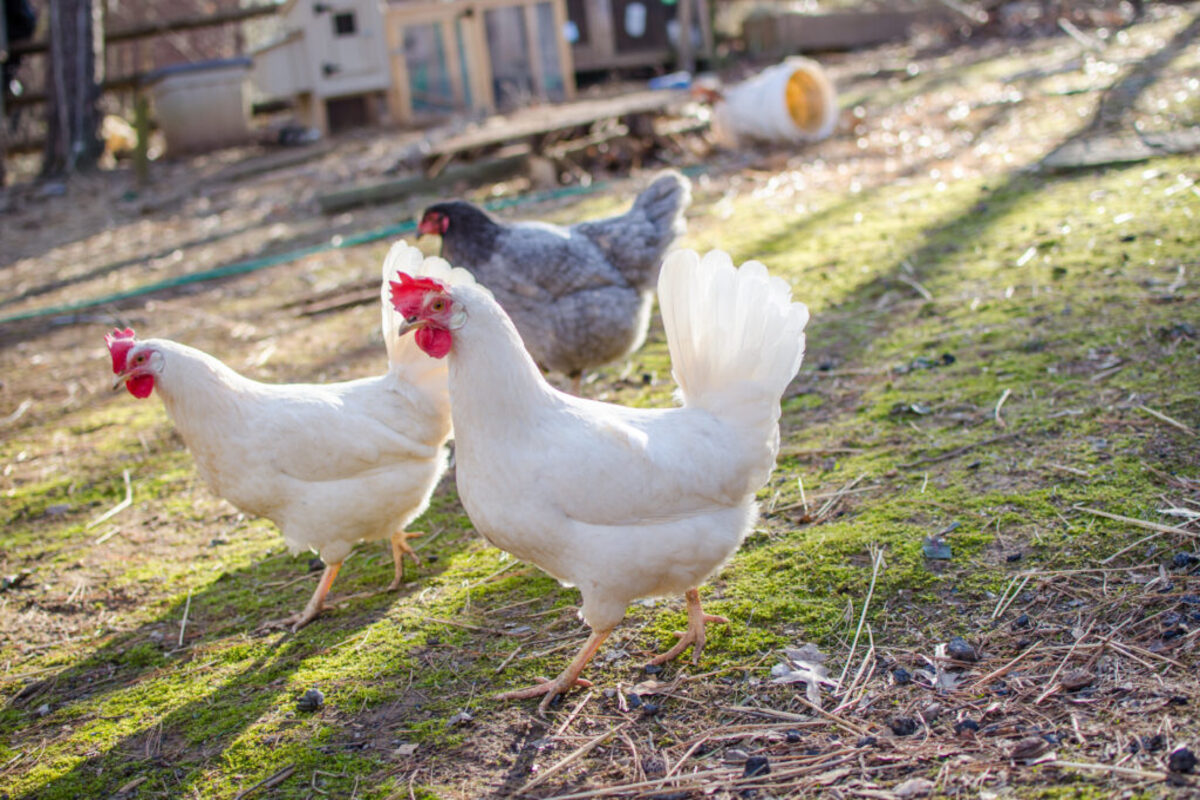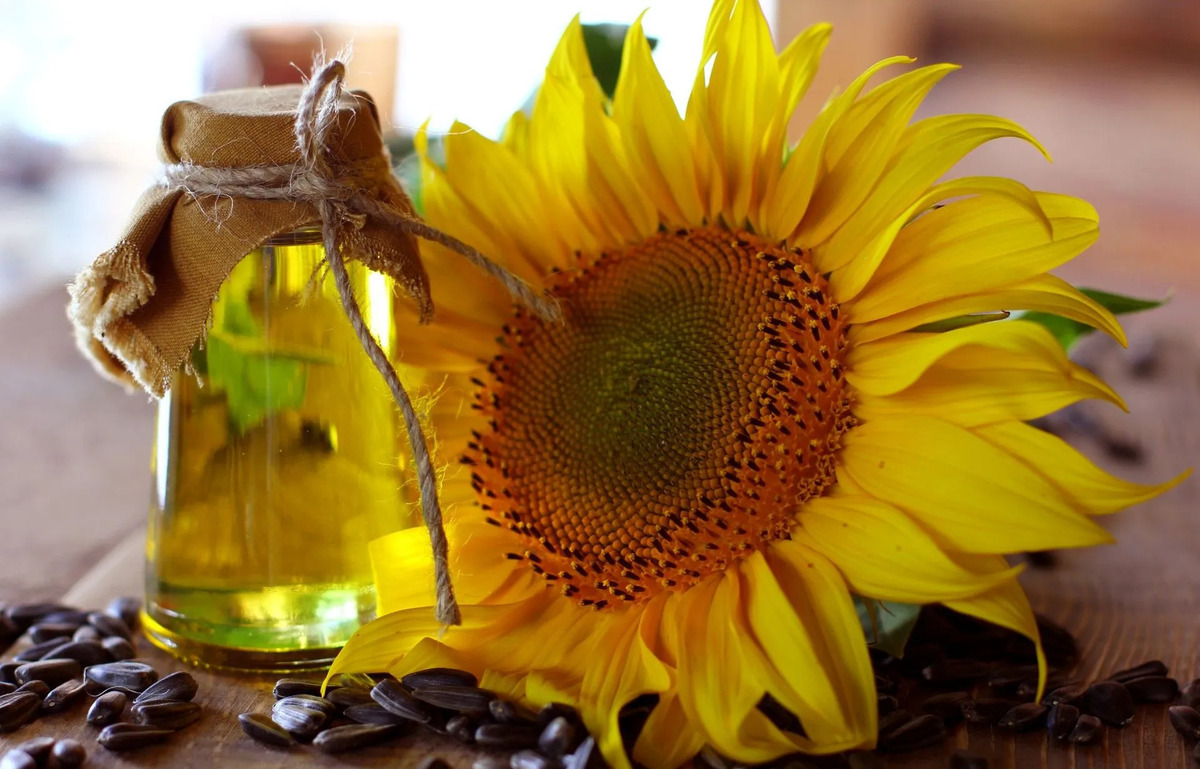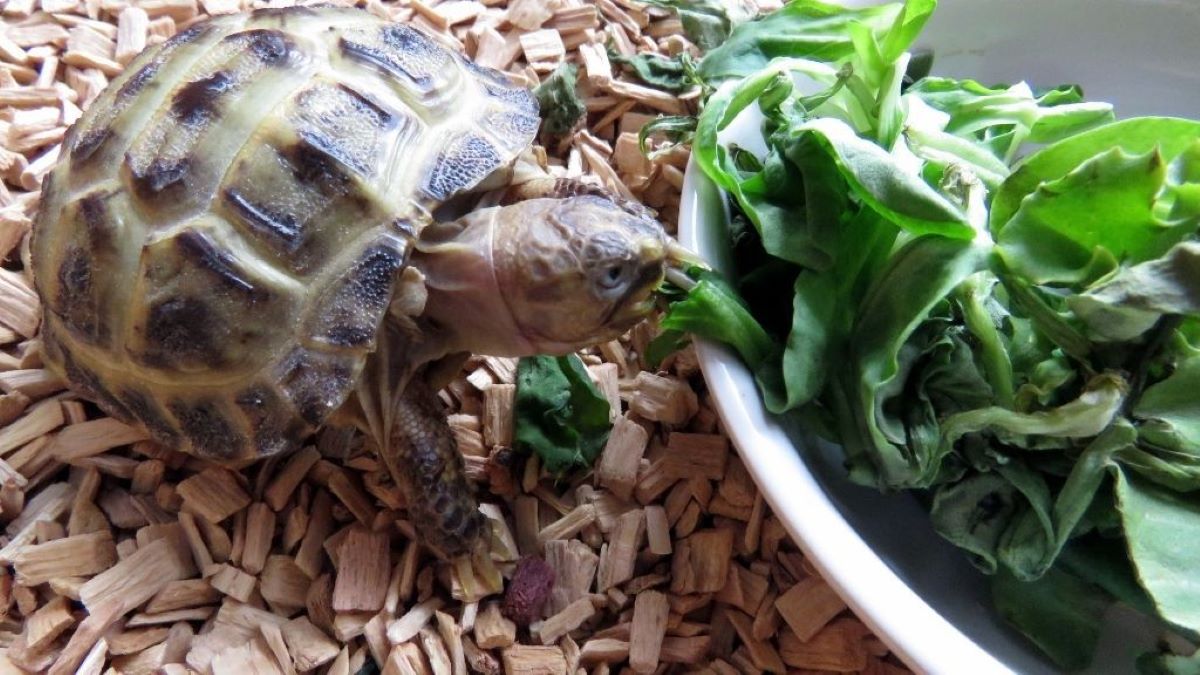Home>Types of Gardening>Edible Gardening>What Weeds Can You Eat


Edible Gardening
What Weeds Can You Eat
Modified: January 22, 2024
Discover the edible plants that you can incorporate into your gardening routine. Learn which weeds are safe to eat and add flavor to your meals.
(Many of the links in this article redirect to a specific reviewed product. Your purchase of these products through affiliate links helps to generate commission for Chicagolandgardening.com, at no extra cost. Learn more)
Table of Contents
Introduction
Edible gardening is a fulfilling and sustainable way to grow your own food right in your backyard. While most people focus on cultivating traditional fruits and vegetables, there is a world of opportunity waiting in your garden that you may not have considered – edible weeds.
Weeds are typically seen as unwanted nuisances that need to be eradicated, but many of them offer surprising nutritional benefits and can be incorporated into your meals. Adding edible weeds to your diet can not only expand your culinary horizons but also provide a range of health benefits. In this article, we will explore the world of edible weeds, their benefits, and safety precautions to consider when foraging for them.
Eating weeds may sound unusual, but throughout history, our ancestors utilized the natural bounty in their surroundings to supplement their diets. Many indigenous cultures have long recognized the value of these plants and have incorporated them into their traditional cuisines.
Before we delve into the specifics of these edible weeds, it is important to note that proper identification is crucial. Some weeds may closely resemble non-edible or toxic plants, so it is essential to do thorough research or consult with a local expert before consuming any plants found in your garden or in the wild.
Now, let’s take a closer look at the many benefits that edible weeds can offer.
Benefits of Eating Weeds
While you may traditionally think of weeds as unwanted plants that invade your garden, they can actually provide numerous nutritional and health benefits. Incorporating edible weeds into your diet can be a wonderful way to diversify your meals and take advantage of the rich array of vitamins, minerals, and antioxidants they offer. Here are some of the key benefits of consuming these underestimated plants:
- Nutritional Value: Edible weeds are often packed with essential nutrients. They can be excellent sources of vitamins A, C, and K, as well as minerals like iron, calcium, and magnesium. Some weeds, such as nettles and dandelions, are particularly rich in protein.
- Rich in Antioxidants: Many edible weeds are high in antioxidants, which help protect your body against damage from harmful free radicals. Antioxidants can promote healthier skin, support your immune system, and reduce the risk of chronic diseases.
- Support Digestive Health: Some edible weeds, like purslane and chickweed, have soothing and anti-inflammatory properties that can benefit your digestive system. They can help alleviate symptoms of conditions such as indigestion, constipation, and even ulcers.
- Environmental Sustainability: Opting to eat weeds can also have a positive impact on the environment. By consuming these plants, you can help minimize food waste and reduce the need for extensive agricultural practices that can harm the planet. Weeds are often hardy and resilient, requiring less water and resources to grow.
- Budget-Friendly: Growing and consuming edible weeds can be a cost-effective way to supplement your meals. These plants often flourish without much maintenance, making them an accessible source of fresh produce.
While these benefits make a compelling case for incorporating edible weeds into your diet, it is important to exercise caution and proper preparation when consuming them. Let’s explore the safety precautions you should keep in mind when foraging for these plants.
Safety Precautions
When it comes to foraging and consuming edible weeds, it is crucial to prioritize safety. While many weeds are safe to eat, there are some considerations to keep in mind to ensure you are selecting the right plants and preparing them properly:
- Proper Identification: The first and most important safety precaution is to correctly identify the plants you plan to consume. Some weeds may resemble toxic or non-edible plants, so it is essential to consult reliable resources or seek guidance from experienced foragers or botanists.
- Location and Environment: Be aware of where you are sourcing your edible weeds. Avoid areas that may have been exposed to pesticides, pollution, or other contaminants. Opt for organic, pesticide-free gardens or consider growing your own edible weeds to ensure their safety.
- Know Your Allergies: Just like with any new food, it is important to be aware of any allergies or sensitivities you may have. Start by consuming small amounts of the edible weeds and monitor your body’s reaction before incorporating them into your regular diet.
- Preparation and Cleaning: Before consuming edible weeds, it is crucial to wash them thoroughly to remove any dirt, insects, or other contaminants. You may also want to blanch or cook certain weeds to neutralize any potential toxins or enhance their flavor and texture.
- Start with Common Edible Weeds: If you are new to eating weeds, it is recommended to start with well-known and widely recognized edible plants like dandelions, purslane, or nettles. These are easier to identify and have a long history of culinary use.
By following these safety precautions, you can confidently and responsibly enjoy the benefits of edible weeds. Now, let’s explore some common edible weeds that you can incorporate into your meals.
Common Edible Weeds
When it comes to edible weeds, there are numerous varieties that can be found in gardens, forests, and even urban environments. Here are some of the most common and easily recognizable edible weeds:
- Dandelion (Taraxacum officinale): Dandelions are not only ubiquitous but also highly nutritious. The entire plant is edible, from its vibrant yellow flowers to its leaves and roots. Dandelion greens can be used in salads, sautéed like spinach, or brewed into herbal teas. The roots can be roasted as a coffee substitute, and the flowers can be used to make delicious dandelion wine or infused into syrups.
- Purslane (Portulaca oleracea): Purslane is a succulent weed with a slightly tangy flavor. It is rich in omega-3 fatty acids, vitamins A and C, and antioxidants. The leaves can be added raw to salads or cooked in stir-fries and soups. Purslane is also known for its thickening properties and can be used to add a unique texture to dishes like stews or salsas.
- Nettle (Urtica dioica): Despite its sting, nettle is a highly nutritious weed with a rich earthy flavor. It is loaded with vitamins, minerals, and protein. The young leaves of nettle can be blanched and used in soups, pestos, or sautéed as a side dish. Nettle tea is also popular for its detoxifying and anti-inflammatory properties.
- Chickweed (Stellaria media): Chickweed is a delicate weed with small, round leaves and tiny white flowers. It has a mild, slightly sweet taste and is often used in salads, sandwiches, or as an ingredient in pestos and smoothies. Chickweed is rich in vitamins, minerals, and antioxidants.
- Lamb’s Quarters (Chenopodium album): Lamb’s quarters, also known as wild spinach, is a nutrient-dense weed resembling spinach leaves. It is packed with vitamins A, C, and potassium. The young leaves can be used raw in salads, cooked like spinach, or added to soups, stews, and stir-fries.
- Amaranth (Amaranthus spp.): Amaranth is a versatile weed that produces highly nutritious edible leaves, seeds, and pseudo-grains. The leaves can be harvested young and used in salads, while the seeds can be cooked like grains or popped like popcorn. Amaranth is a great source of protein, fiber, and essential amino acids.
These are just a few examples of the many edible weeds that nature provides. Experimenting with these plants can add unique flavors, textures, and nutritional benefits to your meals.
Dandelion (Taraxacum officinale)
Dandelions are not just pesky weeds; they are also incredibly versatile and nutritious plants that can be a valuable addition to your edible garden. From their bright yellow flowers to their jagged leaves and long taproots, every part of the dandelion plant is edible and offers a range of culinary uses and health benefits.
The leaves of dandelion are often the most commonly used part of the plant. They are packed with vitamins A, C, and K, as well as minerals like calcium, iron, and potassium. Dandelion leaves have a slightly bitter taste, similar to arugula or endive, and can be enjoyed raw in salads or cooked as a side dish. Sautéing dandelion greens with garlic and olive oil can help reduce their bitterness and enhance their flavor.
But it’s not just the leaves that make dandelions special. The vibrant yellow flowers can be harvested and used to create dandelion syrup, jellies, or even infused into homemade vinegar. Dandelion flower wine is a popular homemade beverage that showcases the unique floral flavors of the plant.
Lastly, dandelion roots can be dug up and roasted to make a coffee substitute. The roasted roots have a deep, nutty flavor and can be ground and brewed like regular coffee. Dandelion root tea is also gaining popularity for its potential health benefits, including liver support and digestion stimulation.
Aside from their culinary uses, dandelions have a long history of traditional medicinal use. They are known for their diuretic properties, which can help promote urinary tract health and prevent water retention. Dandelion leaves and roots are also believed to have detoxifying effects on the liver and support overall digestive health.
When foraging for dandelions, it’s important to choose plants that are free from pesticides and other chemical treatments. Harvest the leaves when they are young and tender, before they become too bitter. The flowers should be picked when they are fully open, as closed buds may contain sap that can be bitter.
Overall, dandelions are an abundant and often overlooked source of food and medicine. If you embrace these vibrant yellow plants in your garden, you can enjoy their culinary delights and harness their potential health benefits.
Purslane (Portulaca oleracea)
Purslane, also known as Portulaca oleracea, is a succulent weed that is gaining recognition as a nutritious and delicious addition to the culinary world. Despite being considered a weed, purslane has a long history of being used in various cuisines around the world.
One of the standout features of purslane is its high omega-3 fatty acid content. These healthy fats are essential for our bodies and are typically found in marine sources like fish. Incorporating purslane into your diet can provide a plant-based source of omega-3 fatty acids, making it an excellent option for vegetarians and vegans.
Purslane has a mild, slightly tangy flavor and offers a crunchy texture, making it a versatile ingredient in both raw and cooked dishes. Its fleshy leaves and stems are rich in vitamins A, C, and E, as well as minerals like magnesium and potassium. It is also a good source of dietary fiber.
In terms of culinary uses, purslane can be enjoyed raw in salads, providing a refreshing and slightly lemony taste. It can also be added to sandwiches, wraps, or used as a topping for tacos and pizzas. Purslane is often used in Mediterranean, Middle Eastern, and Mexican cuisines as a fresh herb or as a base for traditional dishes like tzatziki, dolmas, or salsa verde.
Aside from its nutritional value and culinary uses, purslane also offers potential health benefits. It is known for its anti-inflammatory and antioxidant properties, which can help support heart health, reduce inflammation in the body, and protect against chronic diseases.
When foraging for purslane, it’s important to choose young plants with tender leaves and vibrant green color. The plant should be fresh and free from signs of damage or wilting. Wash the purslane thoroughly and remove any tough stems or large leaves before incorporating it into your recipes.
Whether you embrace purslane as an addition to your edible garden or forage for it in the wild, this nutrient-packed weed is a delightful and nutritious addition to any meal. Its culinary versatility, high omega-3 content, and potential health benefits make it worth exploring in your kitchen.
Nettle (Urtica dioica)
Nettle, scientifically known as Urtica dioica, is a versatile and nutrient-rich weed that has been used for centuries for both its culinary and medicinal properties. While it is notorious for its stinging hairs, nettle offers a range of health benefits and can be an exciting addition to your edible garden or foraging repertoire.
Nettle leaves are rich in vitamins A, C, and K, as well as minerals such as iron, calcium, and magnesium. They are also a great source of protein, making nettle an excellent choice for vegetarians and vegans looking to increase their protein intake. Nettle leaves have a slightly herbal and earthy flavor, similar to spinach but with a unique hint of sweetness.
One of the most popular culinary uses for nettle is in soups and herbal teas. Nettle soup is a common dish in many European countries, especially during the spring when young nettle leaves are abundant. Nettle tea is known for its detoxifying properties and is a soothing herbal beverage that can be enjoyed hot or cold.
Aside from its culinary uses, nettle has a long history of medicinal use. It is believed to have anti-inflammatory properties that can help relieve symptoms of arthritis and allergies. Nettle tea is often used to support urinary tract health and promote healthy digestion.
When harvesting nettle leaves, it’s important to wear protective gloves to avoid getting stung. Harvest the young leaves from the tops of the plant, as they are the most tender and flavorful. Blanching the leaves in boiling water for a few seconds will neutralize the stinging hairs, making them safe to handle and consume.
Nettle can also be used as a natural fertilizer in the garden. Soaking nettle leaves in water creates a nutrient-rich liquid that can be used to feed your plants and boost their growth.
Whether you choose to cultivate nettle in your garden or forage for it in the wild, this versatile weed offers a range of culinary possibilities and potential health benefits. Just remember to handle it with care and explore the many recipes and uses for this remarkable plant.
Chickweed (Stellaria media)
Chickweed, scientifically known as Stellaria media, is a delicate and nutrient-packed weed that often goes unnoticed in gardens and lawns. However, this humble plant has a long history of culinary and medicinal use and offers a range of benefits for those who take the time to explore its potential.
Chickweed has small, oval-shaped leaves and tiny white flowers. It has a mild, slightly sweet taste and a refreshing crunch, making it a versatile addition to salads, sandwiches, and stir-fries. It can also be used as an ingredient in pestos, smoothies, or herbal teas.
This humble weed is surprisingly nutrient-dense, containing vitamins A, C, and B-complex, as well as minerals like iron, calcium, and potassium. Chickweed is also rich in dietary fiber, which can aid digestion and promote a healthy gut.
In addition to its nutritional value, chickweed has soothing and anti-inflammatory properties. Traditionally, it has been used in herbal medicine to alleviate itching, skin irritations, and minor wounds. It is also believed to have diuretic effects, promoting healthy kidney function and reducing water retention.
When foraging for chickweed, look for young plants with fresh green leaves. Harvest the tender shoots and leaves, discarding any stems that appear tough or fibrous. Like other leafy greens, it’s essential to wash chickweed thoroughly before using it in your culinary creations.
Chickweed can be enjoyed raw or lightly cooked to retain its delicate flavor and texture. It pairs well with a variety of other ingredients and can add a unique touch to your dishes. Experiment with incorporating this versatile weed into your favorite recipes to experience the benefits it offers.
Whether you purposefully cultivate chickweed in your garden or stumble upon it in your backyard, this underappreciated plant deserves a spot on your plate. Its nutritional content, mild flavor, and potential health benefits make it a valuable addition to any edible gardening endeavor.
Lamb’s Quarters (Chenopodium album)
Lamb’s quarters, scientifically known as Chenopodium album, is a nutritious and versatile weed that is often overlooked in favor of more traditional leafy greens. However, this abundant plant offers a range of culinary possibilities and nutritional benefits that make it worth exploring.
Lamb’s quarters have triangular or diamond-shaped leaves with a silvery-green hue on their undersides, which lends them their common name. The taste of lamb’s quarters can be compared to spinach, with a slight hint of nuttiness. The leaves are soft and tender, making them suitable for both raw and cooked preparations.
One of the standout features of lamb’s quarters is its high nutritional value. It is an excellent source of vitamins A, C, and K, along with minerals such as calcium, magnesium, and iron. It is also packed with dietary fiber and antioxidants, which support overall health and well-being.
In the culinary world, lamb’s quarters can be used in a variety of ways. The young leaves can be enjoyed raw in salads, providing a fresh and nutritious addition. They can also be sautéed, steamed, or added to soups, stews, stir-fries, or omelets. The versatility of lamb’s quarters allows it to be combined with other vegetables, herbs, and seasonings to create flavorful and satisfying dishes.
For foraging lamb’s quarters, look for young plants with vibrant and tender leaves. Harvest the leaves before the plant bolts or flowers, as this is when the leaves are at their peak tenderness and flavor. Remember to wash the leaves thoroughly before use to remove any dirt or debris.
Aside from its culinary attributes, lamb’s quarters has a long history of medicinal use. It is believed to have diuretic properties, helping to support kidney health and alleviate water retention. Lamb’s quarters may also possess anti-inflammatory effects and can be used externally to soothe skin irritations and bites.
Whether you intentionally cultivate lamb’s quarters in your edible garden or come across it in your backyard, take advantage of this versatile and nutrient-rich weed. Its mild flavor, easy preparation, and abundance make it an excellent addition to your culinary repertoire.
Amaranth (Amaranthus spp.)
Amaranth, belonging to the Amaranthus species, is an incredibly versatile and nutrient-rich weed that has been cultivated and consumed for centuries. Although often overlooked, amaranth offers a range of culinary possibilities and nutritional benefits that make it a valuable addition to any edible garden or foraging practice.
Amaranth leaves are highly nutritious, containing an abundant supply of vitamins A, C, and K, as well as minerals like calcium, iron, and magnesium. They are also a rich source of dietary fiber and plant-based protein. The leaves have a mild and earthy flavor, similar to spinach or Swiss chard, making them a versatile choice for a variety of dishes.
In addition to the leaves, amaranth produces small and highly nutritious seeds. Amaranth seeds are considered pseudo-grains and are gluten-free. They are a complete protein, meaning they contain all the essential amino acids, making them an excellent option for those following a vegetarian or vegan diet. These seeds can be cooked like grains, added to soups and stews, or popped like popcorn for a unique and crunchy snack.
Amaranth is incredibly versatile in the kitchen. The young leaves can be used fresh in salads or sautéed as a side dish. The mature leaves can be blanched and used as a wrap or in stir-fries. Amaranth seeds can be cooked into porridges, pilafs, or used as a gluten-free alternative in baking recipes.
Besides its culinary uses, amaranth has a rich history of traditional medicinal applications. It is believed to have antioxidant and anti-inflammatory properties, aiding in reducing inflammation and supporting overall well-being. Amaranth is also considered beneficial for heart health due to its high fiber and nutrient content.
When foraging for amaranth, look for young plants with vibrant and tender leaves. Harvest the leaves by pinching them off near the stem, taking care not to uproot the entire plant. The seeds can be gathered once the seed heads have turned brown and become dry.
Whether you choose to cultivate amaranth in your garden or forage for it in the wild, this versatile weed offers a unique flavor profile and a host of nutritional benefits. From its nutritious leaves to its protein-packed seeds, amaranth is an excellent addition to your edible gardening journey.
Conclusion
Edible weeds are often overlooked and underappreciated, but they offer a world of exciting culinary possibilities and nutritional benefits. From dandelions to purslane, nettle to chickweed, lamb’s quarters to amaranth, these humble plants can add depth and flavor to your meals, while also providing essential vitamins, minerals, and antioxidants.
When foraging for edible weeds, it is crucial to prioritize safety and proper identification. Ensure you are selecting the correct plants by consulting reliable resources or seeking guidance from experienced foragers or botanists. Consider the environment in which the plants grow and avoid areas that may have been exposed to pesticides or contaminants.
Each edible weed has its unique culinary uses and health benefits. Whether you choose to grow them in your garden or forage for them in the wild, you’ll be rewarded with an abundance of flavors, textures, and nutritional value.
So, why not embrace the untapped potential of edible weeds? Incorporate them into your meals, experiment with different recipes, and explore the natural bounty that your garden and surrounding environments offer. By doing so, you can nourish both your body and your taste buds while connecting with nature in a sustainable and fulfilling way.









